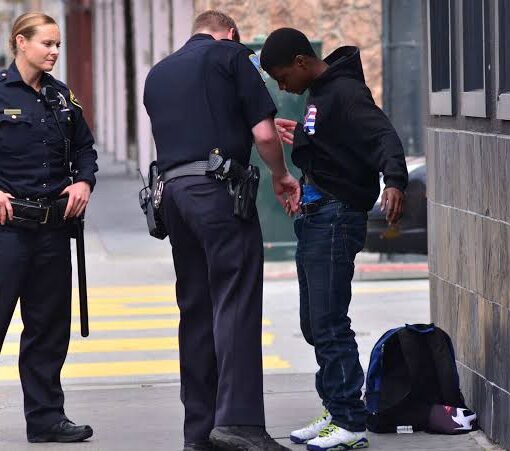In today’s world, protests and demonstrations have become a common form of expressing dissent and advocating for change. Occasionally, these protests involve road blockades that can lead to traffic disruptions and challenges for drivers. As a responsible driver, it’s essential to know how to navigate such situations while ensuring safety for everyone involved. This guide outlines crucial steps you should take if you encounter protesters blocking the road.
What Do I Do As Driver If Protesters Blocks The Road?
1. Remain Calm and Assess the Situation:
Encountering roadblockades can be frustrating, but maintaining a calm demeanor is paramount. Panicking or reacting aggressively can escalate the situation and put everyone’s safety at risk. Start by assessing the size of the protest, the behavior of the protesters, and any signs or banners they may be carrying. This information will help you gauge the nature of the protest and decide on your course of action.
In some cases, protests may be peaceful and organized, while others might involve tense confrontations or even potential violence. Observing from a distance and listening to any announcements or statements made by protest organizers can provide valuable insights into their intentions.
2. Prioritize Safety:
The safety of yourself, your passengers, and the protesters is of utmost importance. Keep in mind that road blockades can often involve pedestrians, including children and elderly individuals. Ensure your vehicle comes to a complete stop at a safe distance from the blockade, leaving ample space for emergency vehicles if needed. Turn on your hazard lights to signal your stationary position to other drivers and protesters.
Avoid aggressive driving maneuvers, honking, or attempting to force your way through the blockade. These actions can escalate tensions and endanger everyone involved. Remember that patience and a cautious approach are vital to maintaining safety.
3. Engage In Open Communication:
Engage in open communication with the protesters, if possible. They may have designated representatives who can provide information about the purpose of the protest, its expected duration, and whether there are any alternative routes available. Cooperating with protest organizers and understanding their cause can help create a more respectful and cooperative atmosphere.
If you need to communicate with emergency services or law enforcement, do so calmly and clearly. Provide your location, describe the situation, and follow any instructions they provide.
4. Make a Report To The Law Enforcement:
In the face of tension, and seemingly harm or danger, report the issue to the law enforcement. Law enforcement may have protocols in place to manage such situations and ensure everyone’s safety. They could also help disperse the crowd or give you an alternative route to take.
5. Use Navigation App for Alternative Routes:
As part of your preparedness as a driver, always have a navigation app or map handy. When encountering a road blockade, use these tools to identify alternative routes that can help you bypass the protest while minimizing inconvenience. If you’re unfamiliar with the area, you can also ask for directions from bystanders, or fellow drivers who might be familiar with detours.
Before embarking on your journey, consider checking local news and social media for updates on road closures or potential protests. This proactive approach can help you anticipate challenges and plan accordingly.
6. Avoid Confrontations:
While it’s natural to feel frustrated or inconvenienced by a road blockade, it’s important to avoid confrontations with protesters. Engaging in arguments, shouting, or displaying aggressive behavior can escalate tensions and lead to potentially dangerous situations. Instead, focus on maintaining a respectful and calm demeanor. If you need to interact with protesters or organizers, do so in a courteous manner, and keep your emotions in check.
7. Be Mindful of Legal Considerations:
Understanding the legal aspects of road blockades and protests in your jurisdiction is essential. In some cases, protesters might have obtained the necessary permits to stage their demonstration, while in other situations, road blockades might be illegal. Familiarize yourself with local laws and regulations regarding protests, road closures, and the rights of demonstrators. This knowledge can help you make informed decisions and respond appropriately to the situation.
8. Document the Situation:
If the road blockade leads to a delay or disruption of your travel plans, consider documenting the situation. Take photos or videos from a safe distance, capturing the nature of the protest, the behavior of protesters, and any relevant details. This documentation can serve as evidence if you need to file an insurance claim or report the incident to law enforcement due to damage or delays caused by the protest.
9. Stay Neutral on Social Media:
In the age of social media, it’s common for people to share their experiences online. If you choose to share your encounter with a road blockade on social media, it’s advisable to remain neutral and factual in your description. Avoid making inflammatory or biased statements, as these can lead to online conflicts and misunderstandings. Stick to sharing the facts of the situation and any insights you gained from the experience.
10. Consider Alternate Transportation:
If the road blockade seems likely to persist for an extended period and you’re in a hurry to reach your destination, consider exploring alternate transportation options. Depending on the circumstances, you might be able to walk, bike, or use public transportation to continue your journey. This could be an opportunity to experience a different mode of travel and reduce the impact of the blockade on your plans.
11. Supportive Measures for Protesters:
While you’re waiting for the road blockade to clear, consider showing support for the protesters in peaceful ways. You could honk your horn in solidarity, display a sign of support in your vehicle window, or offer words of encouragement if you’re able to interact with protesters. Demonstrating empathy and understanding for their cause can help create a positive atmosphere during the blockade.
12. Consider Slow Driving Through The Crowd:
Driving very slowly through the crowd, and honking is fair enough. After trying out the options above and none seem to be helpful to help you get to your destination on time, put out your car through the crowd but drive very very slowly.
In some cases, road blockades might result in unexpected outcomes, such as detours or changes in traffic flow. Before setting out on your journey, familiarize yourself with alternative routes and potential traffic congestion points. Having a flexible mindset and being prepared for various scenarios can help you adapt quickly to changes and reduce frustration.
RELATED:
What Can I Legally Do With Abandoned Cars I Found On My Property?
Can You Be Charged with Employee Theft After Being Fired?
Encountering a road blockade due to a protest requires adaptability and a willingness to take care of yourself, your passengers, and the larger community. By considering alternate transportation, showing supportive measures, and preparing for various scenarios, you can navigate the situation with resilience and a positive attitude. Remember that these actions not only impact your experience but also contribute to the overall atmosphere during the road blockade.
Last updated on: April 20, 2024




